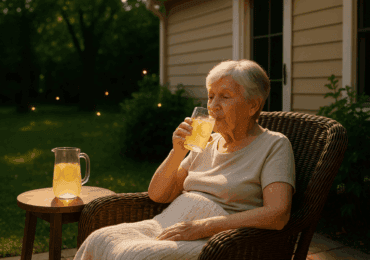When we think of summer, images of warm sunshine, blooming gardens, and longer days come to mind. However, for hospice patients, the season also brings unique challenges, like heat sensitivity, dehydration risks, and environmental discomforts that can impact quality of life. To ensure these seasonal needs are met without disruption, billing services for hospice providers become crucial for maintaining financial stability and delivering comprehensive, adaptable care. Hospice services are rooted in providing comfort and dignity, and as temperatures rise, caregivers must adjust their approach to ensure patients remain safe, calm, and cared for. Summer safety isn’t just about avoiding heatstroke—it’s about maintaining a nurturing environment where patients can enjoy the season in comfort and peace.
Prioritizing Hydration and Nutrition
One of the most critical concerns in summer is dehydration, especially for patients who may have difficulty recognizing or communicating thirst. Hospice teams should encourage regular fluid intake, offering various hydrating options such as flavored waters, electrolyte drinks, or water-rich foods like watermelon, cucumber, and popsicles. Some patients may benefit from frozen treats that combine nutrition and hydration—a simple yet effective way to help them stay cool.
Equally important is summer-appropriate nutrition. Heavier meals may become less appealing in the heat, so hospice providers can work with dietitians or caregivers to offer lighter, nutrient-rich meals that support health without overburdening the body.
Creating a Cool and Comfortable Environment
Indoor climate control is essential for hospice patients during warmer months. Many may be especially vulnerable to heat due to medications, reduced mobility, or chronic conditions. Providers should ensure air conditioning is functioning properly and accessible in patient spaces. If AC isn’t available, fans, portable cooling units, and blackout curtains can help maintain a cool interior environment.
Hospice teams can also educate families on the signs of heat-related illness, such as dizziness, confusion, and nausea, and when to alert medical staff. Smooth operations in these areas often depend on the organization’s ability to utilize billing services for hospice providers efficiently, ensuring the necessary funding is available for patient support services. Simple routines like offering cool compresses, dressing patients in breathable clothing, and adjusting daily schedules to avoid peak heat hours can make a meaningful difference in comfort and well-being.
Outdoor Enjoyment, Safely
Just because it’s hot doesn’t mean patients must stay indoors 24/7—fresh air and sunshine can still be part of a comforting, life-affirming hospice experience. The key is timing and preparation. Morning or evening outings, when the sun is less intense, allow patients to enjoy nature without excessive exposure.
Hospice providers can coordinate short walks, porch visits, or garden time with protective measures in place: sun hats, SPF-rated clothing, sunscreen, and shaded areas should all be considered. This intentional exposure to nature can boost mood, ease anxiety, and create meaningful moments for patients and their families.
Monitoring Medication Interactions
Summer heat can interact with certain medications in unexpected ways. Some drugs may impair the body’s ability to regulate temperature, increase sun sensitivity, or lose efficacy if not stored properly. Hospice clinicians must review medication regimens for heat-sensitive prescriptions and advise families or facility staff on proper storage, especially for in-home care patients.
Additionally, pharmacists and nurses can provide guidance on signs of adverse drug reactions related to heat, ensuring that medication management remains a central part of the seasonal care plan.
Emotional and Psychological Support
Summer can stir a complex mix of emotions in hospice patients—longing for past vacations, sadness over limited mobility, or simply feeling left out of typical seasonal activities. Hospice providers play a vital role in acknowledging and validating these emotions while offering alternatives to help patients feel connected.
Simple seasonal pleasures, like sipping lemonade on a patio, listening to summer-themed music, or watching fireflies in the evening, can be incredibly therapeutic. Art, music, or storytelling sessions inspired by summer memories can also help patients process their feelings while staying emotionally engaged.
Supporting Caregivers and Family
Families and caregivers also need guidance during the summer months. Hospice providers can offer seasonal education, such as tips on keeping homes cool, managing outdoor visits, and recognizing the subtle signs of heat-related distress. Even small gestures—like leaving a hand fan, cool towel, or hydration guide—can go a long way in easing loved ones’ stress.
Additionally, encouraging respite care or providing emotional check-ins for caregivers helps prevent burnout and ensures patients receive the best possible care, even in challenging conditions.
Conclusion
Summer can be a beautiful time of year, full of warmth and light, but for those in hospice, it also brings vulnerability. Hospice providers have a unique opportunity to adapt their care strategies with empathy, creativity, and clinical foresight to ensure every patient feels comforted, protected, and included in the season’s quiet joys. By implementing thoughtful summer safety enhancements and securing critical resources through effective billing services for hospice providers, organizations can ensure that patients experience peace, dignity, and celebration throughout the warmer months.
